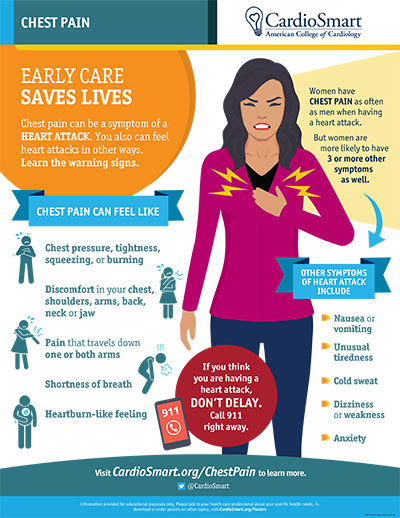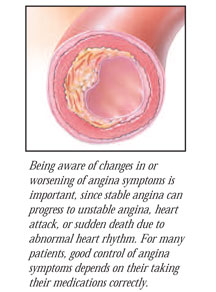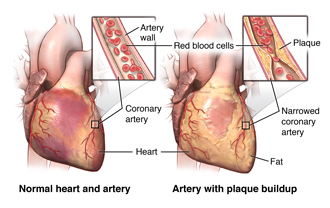Angina Most Often Occurs Due to Which of the Following
Pressure aching or burning in the neck jaw and shoulders usually the left shoulder and even down the arm. Most often occurs following physical exertion or emotional stress When positioning the patient experiencing myocardial infarction it is best to place the patient in a seated postion The syndrome characterized by episodes of pain when the heart experiences oxygen deficiency is myocardial infarction.
Angina is usually due to obstruction or spasm of the arteries that supply blood to the heart muscle.

. A very rare form of coronary artery spasm. Progressive angina FS frog is one of the clinical forms of unstable angina. The most common cause of angina is coronary artery disease.
Coronary artery spasm due to an allergic reaction. When your heart muscle isnt getting enough oxygen it causes a condition called ischemia. Occurs following periods of strenuous exertion b.
It is due to atherosclerosis. Angina is not a disease but a symptom. Angina is chest pain or discomfort that most often occurs when you do certain activities or feel stressed.
The pain and discomfort in case of variant angina usually occurs at rest and during the night or during the early morning hours. All of these activities can require more blood oxygen flowing to the heart than usual resulting in the narrowed coronary arteries not being able to keep up with the demand. Stable angina is less serious than unstable angina but it can be very painful or uncomfortable.
The most common form of coronary artery spasm. Pressure aching or burning in the middle of the chest. This is caused by a spasm in the coronary arteries.
In angina pectoris as in myocardial infarction coronary blood. Angina is caused by reduced blood flow to your heart muscle. Angina is a symptom of coronary artery disease.
In contrast to stable angina unstable angina. Ischemia inadequate supply of blood and oxygen to the heart muscles is the main cause of angina pectoris. Eosinophilic coronary periarteritis.
The disease is caused by various bacteria viruses and fungi. Other causes include anemia abnormal heart rhythms and heart failureThe main mechanism of. Vasospastic angina pectoris can be easily diagnosed by evaluating clinical criteria and or provocative spasm testing.
Angina Pectoris is a medical term for chest discomfort or pain as a result of coronary heart disease. This happens when the arteries carrying blood to heart either gets blocked or narrowed. Approximately 98 million Americans are estimated to experience angina annually with 500000 new cases of.
This is called unstable angina. It is caused by poor blood flow through the blood vessels of the heart muscle. Spasms can be caused due to exposure to cold weather stress smoking use of cocaine or taking medications that may tighten or narrow the arteries.
Angina often occurs when the heart muscle itself needs more blood than it is getting for example during times of physical activity or strong emotions. Your blood carries oxygen which your heart muscle needs to survive. It occurs when an area of the heart muscle receives less blood oxygen than usual.
In addition to this this group includes the first occurrence of angina variant angina or Printsmeta and early postinfarction angina pectoris. The causative agents of the disease can enter the human body by airborne droplets or through common household items dishes cutlery towels. Among all risk factors tobacco smoking most often contributes to the occurrence of vasospastic angina.
Angina pectoris is the result of myocardial ischemia caused by an imbalance between myocardial blood supply and oxygen demand. When angina is due to atherosclerosis it usually first occurs during physical exertion or emotional distress which make the heart work harder and increase its need for oxygen. Symptoms of angina include.
If you have high blood pressure diabetes or high cholesterol your health care provider may advise you to. Due to the insufficient blood flow to the heart heart cells are starved of oxygen and begin to die. Is less frequent but is associated with more pain.
A fatty substance called plaque builds up in your arteries blocking blood flow to your. It occurs when the heart does not receive sufficient blood most probably due to one or more arteries of the heart getting blocked. When arteries are severely narrowed angina can also occur at rest.
This division classification was developed by Brownwald in the late 80s. Coronary Artery Disease CAD Angina Pectoris can be a symptom of CAD. Most cases appear as a result of activity including during or just after exercise a heavy meal or even stress.
The most common cause of angina is coronary artery disease. Severely narrowed arteries may allow enough blood to reach the heart when the demand for oxygen is low such as when youre sitting. Angina can feel like a pressing squeezing or crushing pain in the chest under your breastbone.
Often awakens the patient from his or her sleep c. If it is a partial obstruction treatment may include medication surgery or placement stent. Angina is chest pain or discomfort that occurs when some part of your heart does not get enough blood and oxygen.
Angina most often occurs when coronary artery disease causes plaque to build up in arteries supplying the heart and limits sufficient blood flow to the heart. Angina pectoris is the medical term for this type of chest pain. A sense of anxiety or uneasiness.
Attacks of vasospastic angina often short and occur in the morning 5-8 hours. This occurs when arteries that carry blood to your heart become narrowed and blocked. Coronary artery disease is usually caused by atherosclerosis.
If the artery is narrowed enough usually by more than 70 angina can occur even at rest when the demands on the heart are at their minimum. The most common cause of reduced blood flow to your heart muscle is coronary artery disease CAD. Angina also known as angina pectoris is chest pain or pressure a symptom of coronary heart disease usually due to insufficient blood flow to the heart muscle myocardium.
Angina usually happens because of heart disease. It is due to non-allergic infiltration of coronary arteries by eosinophils. It is a common presenting symptom typically chest pain among patients with coronary artery disease CAD.
In this condition fatty deposits called plaque build up along the inside walls of blood vessels that feed oxygen and nutrients to the pumping heart. Cases of acute angina may appear following a heavy meal. Angina is tightness squeezing pressure or pain in the chest.
This happens due to narrowing or blockage of arteries of the heart. There are many risk factors for coronary artery disease. Specialists highlighting the most common causes of angina they call infection.
Indicates that myocardial necrosis has occurred d.

Angina Chest Pain Cardiosmart American College Of Cardiology


0 Response to "Angina Most Often Occurs Due to Which of the Following"
Post a Comment